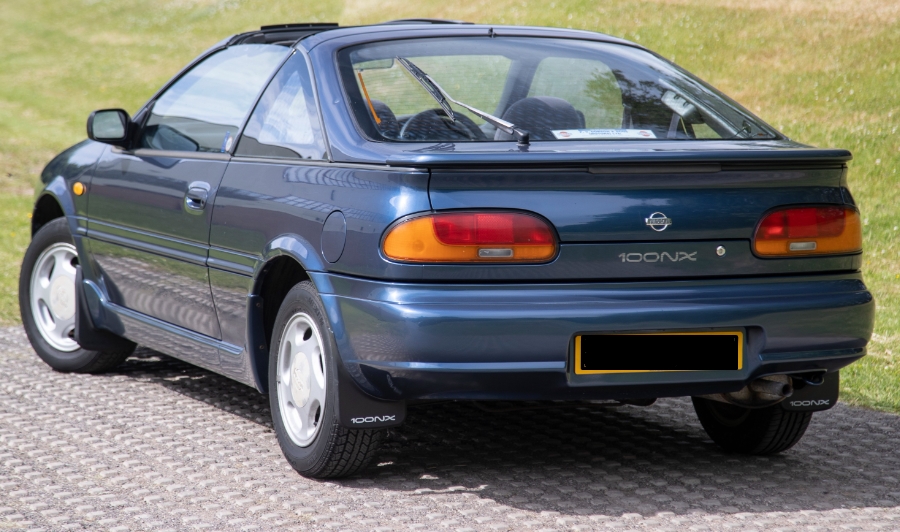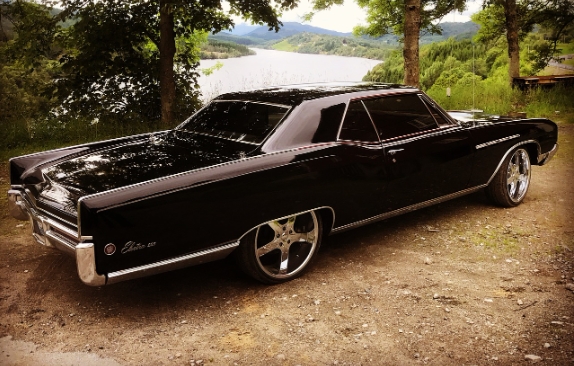The Quirky Coupe with a Removable Crown: The Evolution of the Nissan 100 NX
In the vibrant automotive landscape of the early 1990s, a period defined by neon colors, pop music, and a surge in affordable, fun-to-drive cars, Nissan unveiled a contender that was as charming as it was unconventional. The Nissan 100 NX was more than just another small coupe; it was a statement of accessible style, built on a foundation of proven engineering, and crowned with a feature that defined its character: a T-top roof. This is the story of its evolution, from its conceptual roots to its final iteration as a cult classic.
The Predecessor: Setting the Stage with the Pulsar NX (1986-1990)
To understand the 100 NX, one must first look to its direct ancestor, the N13-platform Nissan Pulsar NX (sold as the EXA in Japan and Australia). Launched in 1986, the Pulsar NX was a bold experiment in modular design. Its most famous feature was the “Canopy” system, which allowed owners to swap the standard hatchback rear for an optional wagon-like canopy called the “Sportbak.” This transformed the car from a sporty notchback coupe into a compact shooting brake. This innovative, if not entirely mainstream, concept demonstrated Nissan’s willingness to play with rooflines and offer unique, customizable experiences in the affordable sports car segment. The Pulsar NX established the DNA of a small, economical coupe that didn’t take itself too seriously, setting the stage for its successor.
A New Decade, A New Design: The B13 Platform (1990)
As the 1980s gave way to the 1990s, automotive design shifted from the sharp, angular lines of the “wedge” era to a softer, more organic aesthetic often termed “bio-design.” Nissan’s B13 platform, which underpinned the new generation of the Sunny (in Japan) and Sentra (in North America), was a prime example of this new philosophy. Critically, the B13 platform was lauded for its excellent chassis dynamics, featuring a sophisticated independent multi-link rear suspension that provided a superb balance of comfort and handling prowess.
It was on this robust and agile platform that Nissan built its new coupe. Unveiled in 1990 in Japan as the Nissan NX Coupe, and subsequently rolled out to global markets, the car was a complete departure from the boxy Pulsar NX. It featured a smooth, jellybean-like silhouette, a low-slung profile, and its most debated design element: a pair of prominent, elliptical headlamps that gave the car a perpetually surprised, almost amphibious look. Love it or hate it, the design was undeniably distinctive and captured the optimistic spirit of the era.
.

.
The Global Rollout: A Tale of Three Markets
The aevolution and model lineup of the NX is best understood by examining its three primary markets, each with its own unique branding, engine options, and production timeline.
1. Japan: The Nissan NX Coupe (1990-1994)
The domestic market received the car first. The Nissan NX Coupe was offered with a range of engines tailored to Japanese tax laws and consumer preferences.
- Type A: The entry-level model was powered by the 1.5-litre GA15DS, a 16-valve DOHC engine with a carburetor, producing around 94 PS (93 hp). It was the economical choice, focused on style over speed.
- Type B: The mid-range model featured the 1.6-litre GA16DE engine. This was a more modern, fuel-injected DOHC unit producing a healthier 110 PS (108 hp), offering a good blend of performance and efficiency.
- Type S: The top-tier model in Japan was equipped with the 1.8-litre SR18DE engine, a member of Nissan’s now-legendary SR engine family. This DOHC, fuel-injected engine produced 140 PS (138 hp), providing spirited performance that matched the car’s sporty looks.
All models were front-wheel drive, available with either a 5-speed manual or a 4-speed automatic transmission. The T-top roof was a popular option across the range.
2. North America: The Nissan NX1600 & NX2000 (1991-1993)
Arriving for the 1991 model year, the North American version was simplified into a two-model strategy.
- NX1600: This was the base model, powered by the 1.6-litre GA16DE DOHC engine, rated at 110 hp. It came with the distinctive styling and solid B13 chassis, but focused more on being an economical, stylish commuter. The T-top roof was available as an option and was a key selling point.
- NX2000: This is the version that cemented the car’s legacy as a “pocket rocket.” Nissan took the brilliant powertrain from the acclaimed Sentra SE-R and dropped it into the lighter, more stylish coupe body. The heart of the NX2000 was the revered 2.0-litre SR20DE engine, producing 140 hp and 132 lb-ft of torque. But it was far more than just an engine swap. The NX2000 also came standard with a viscous limited-slip differential (VLSD) to combat wheelspin, larger four-wheel disc brakes, a firmer sport-tuned suspension, and wider 14-inch alloy wheels. With a 0-60 mph time of around 7.5 seconds, it was a legitimate performance bargain that could surprise much more expensive machinery.
Despite critical acclaim, particularly for the NX2000, the car had a very short production run in North America, being discontinued after the 1993 model year due to shifting market dynamics and Nissan’s platform consolidation.
3. Europe: The Nissan 100 NX (1991-1996)
Europe received the car as the “100 NX,” where it enjoyed the longest production run and the most varied evolution.
- Initial Phase (1991-1993): The launch models reflected a split between economy and performance.
- 1.6: The entry-level European model was initially equipped with the 1.6-litre GA16DS engine, a carbureted version producing 90-95 PS. This provided adequate performance and was the volume seller.
- 2.0 GTI: The hero model was the GTI, which featured the same potent 143 PS (141 hp) SR20DE engine as the American NX2000. It shared the performance credentials, offering superb acceleration and handling, making it a formidable competitor in the European hot hatch and coupe market.
- Mid-life Update and Facelift (1993-1996): As emissions regulations tightened across Europe, Nissan was forced to update the 100 NX’s engine lineup.
- The carbureted GA16DS was phased out. It was replaced by the fuel-injected, 1.6-litre GA16DE engine, which produced a more modern and efficient 102 PS (101 hp). This model was often badged as the 1.6 SR, though the “SR” designation was a trim level and should not be confused with the SR engine family. This became the standard engine for the latter half of the car’s life.
- The 2.0 GTI model continued to be available, remaining the flagship performance variant.
- Europe also saw a multitude of special editions, primarily focused on cosmetic enhancements. These included models like the “Sail,” “Pacific,” “Emotion,” and “Colour Concept,” which often featured unique paint colours, special alloy wheels, and interior trim details to maintain sales momentum.
The 100 NX was eventually discontinued in 1996, with no direct successor. The small coupe market was shrinking, and Nissan shifted its focus towards the Almera hatchback and, later, the revival of the Z-car lineage.
The T-Top: A Defining Experience
No discussion of the 100 NX is complete without focusing on its most celebrated feature. The T-top roof, standard on many higher-end trims and optional on others, consisted of two removable glass panels that could be unlatched and stored in dedicated felt bags in the trunk. This system offered a brilliant compromise: the open-air thrill of a convertible without the significant structural compromises, weight gain, and complexity of a full soft-top.
On a sunny day, with the panels removed and the windows down, the 100 NX provided a joyful, wind-in-your-hair driving experience that set it apart from rivals like the Honda CR-X (with its smaller sunroof) and the Toyota Paseo. While the seals could be prone to leaks as the cars aged—a common ailment for any T-top vehicle—the sheer novelty and pleasure it provided were central to the car’s enduring appeal.
Legacy and Conclusion
The Nissan 100 NX was a product of its time—a time when Japanese manufacturers were confidently building a wide array of niche vehicles. It was never a massive sales success on the scale of a Honda Civic or a Toyota Corolla, but it carved out a dedicated following.
Its evolution shows a car that was intelligently adapted for different global markets. From the engine-diverse NX Coupe in Japan to the focused performance of the North American NX2000 and the long-lived, fashion-conscious 100 NX in Europe, it was a car of many faces.
Today, the Nissan 100 NX is a cherished modern classic. Its reliable B13 underpinnings mean many are still on the road, while the legendary status of the SR20DE engine makes the GTI and NX2000 models highly sought after by enthusiasts. It stands as a charming reminder of an era when a car could be affordable, dependable, fun to drive, and unapologetically quirky—a quirky coupe with a removable crown that still turns heads and brings smiles to faces three decades later.







